Compost vs. Organic Soil: Which is Better for Your Garden?
- June 4, 2024
- 0 comment
Compost vs. Organic Soil: Discover which is best for boosting your garden’s growth and vitality in our comprehensive guide. Every gardener faces a pivotal decision: choosing between compost and organic soil. This guide delves into the advantages of each, helping you nurture a thriving garden.
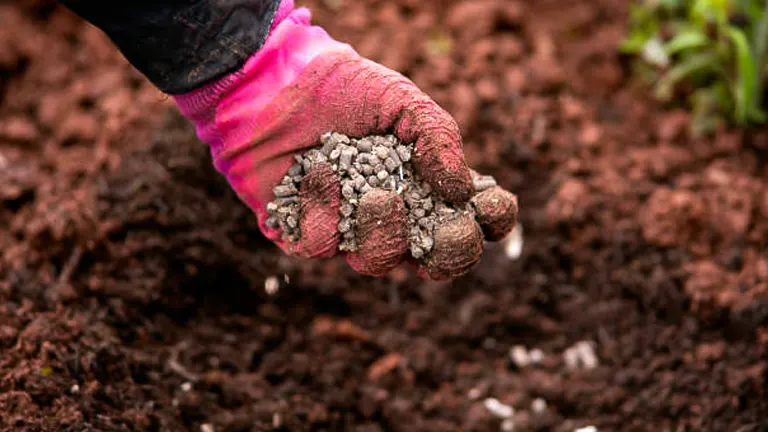
Whether you’re looking to boost plant health or improve soil structure, understanding the differences is key. Let’s dig into the details to find out which is truly better for your garden.
Table of Contents
- Understanding Compost
- Benefits of Using Compost
- Limitations and Considerations
- Understanding Organic Soil
- Benefits of Using Organic Soil
- Comparative Analysis
- Practical Guidelines
- Conclusion
- FAQs
Understanding Compost
Definition and Composition
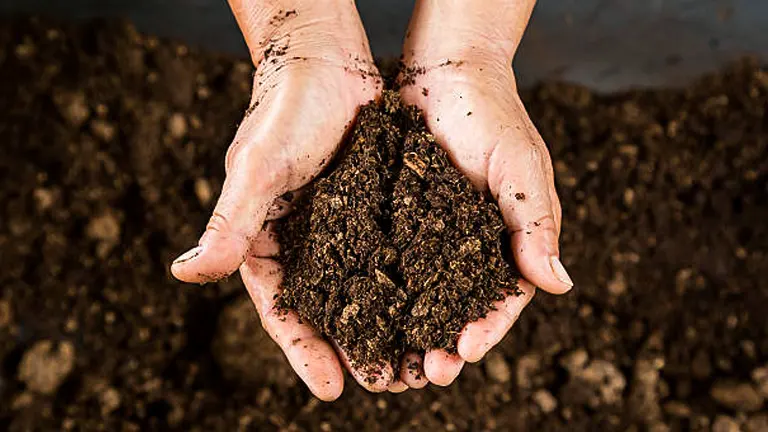
Compost, often hailed as nature’s recycler, is the result of organic waste decomposition facilitated by microorganisms, heat, and moisture. This process transforms kitchen scraps, lawn trimmings, paper products, and more into a dark, crumbly substance called humus. Humus is enriched with nutrients and teeming with beneficial microorganisms that play a crucial role in soil health.
The composition of compost varies based on the input materials, but it generally includes a balance of carbon-rich ‘browns’ such as dried leaves and wood chips, and nitrogen-rich ‘greens’ like food scraps and grass clippings. The optimal carbon to nitrogen ratio (C) for effective composting is between 25:1 and 30:1, which ensures a thermophilic decomposition process that can reach temperatures up to 70°C (158°F).
Nutrient Composition and Benefits
Compost enriches the soil with essential nutrients, which are released slowly and can drastically enhance plant health and growth. Here’s a more detailed look at the benefits:
- Soil Structure Improvement: Compost integrates into the soil matrix, loosening tightly bound particles in heavy clay soils to enhance aeration and drainage. In sandy soils, it acts like a sponge, retaining moisture that would otherwise percolate away.
- Enhanced Nutrient Content: Compost is a powerhouse of slow-releasing nutrients. Unlike synthetic fertilizers, which can lead to nutrient runoff and pollution, compost provides a sustained nutrient release. This is crucial for maintaining long-term soil fertility.
- Water Retention: By improving the soil’s organic matter content, compost increases its water-holding capacity. This can reduce the need for irrigation by up to 50%, conserving water and saving energy.
Scientific Analysis of Nutrient Levels
The following table provides a typical analysis of nutrient content in compost, illustrating its variability and richness:
| Nutrient | Typical Concentration (dry basis) |
|---|---|
| Nitrogen (N) | 0.5% – 3.0% |
| Phosphorus (P) | 0.2% – 1.5% |
| Potassium (K) | 0.5% – 2.0% |
| Calcium (Ca) | 0.5% – 2.5% |
| Magnesium (Mg) | 0.1% – 0.5% |
| Sulfur (S) | 0.1% – 0.5% |
| pH | 6.0 – 7.5 |
While the benefits of compost are substantial, there are considerations that must be managed:
- Variability: The nutrient content and quality of compost can vary widely, influenced by the source materials and composting methods. This can affect consistency and predictability in garden applications.
- Potential Contaminants: Compost must reach sufficient temperatures to eliminate pathogens and weed seeds. Incomplete composting or low-temperature processes may not achieve these critical thresholds, posing risks to plant health.
- Time and Effort: The composting process requires diligent management, including regular turning and monitoring of moisture and temperature. This investment of time and labor is necessary to produce high-quality compost.
Benefits of Using Compost
Bioavailability of Nutrients

Compost acts as a critical soil amendment by enhancing the bioavailability of nutrients, making it superior to synthetic fertilizers in several ways:
- Complex Nutrient Matrix: Compost contains a diverse array of nutrients embedded within organic matter. This complexity ensures that nutrients are released gradually through microbial action as the compost decomposes. For example, nitrogen in compost is often in the form of organic compounds that must be mineralized by soil bacteria, which mimics natural soil processes and provides a sustained nutrient release.
- Synchronization with Plant Needs: The gradual release from compost aligns more closely with plant growth cycles, reducing the risk of nutrient overload and runoff. Research indicates that compost can increase the nutrient-holding capacity of the soil by up to 20%, ensuring that nutrients are retained in the root zone where plants can access them as needed.
Contribution to Biodiversity
Adding compost to soil is about more than just nutrients; it’s a vital strategy for enhancing biodiversity within the garden ecosystem:
- Microbial Diversity: Compost is teeming with life, introducing beneficial bacteria, fungi, and even protozoa and nematodes to the soil. These organisms play essential roles in decomposing organic material, cycling nutrients, and suppressing soil-borne diseases.
- Structural Soil Improvement: By improving soil structure, compost enhances the habitat for soil microorganisms as well as macroorganisms such as earthworms. The increased organic matter supports a richer soil food web, which contributes to a more stable garden ecosystem.
- Disease Suppression: Studies have shown that diverse microbial communities in compost-rich soils can help suppress plant pathogens, reducing the incidence of common garden diseases.
Scientific Analysis and Benefits Summary
Here is a table summarizing the key benefits of compost use, supported by scientific data:
| Benefit | Description | Impact Measurement |
|---|---|---|
| Nutrient Release | Sustained release of essential nutrients. | Up to 50% longer nutrient availability. |
| Nutrient Retention | Increases soil cation exchange capacity. | Enhances nutrient holding by 20%. |
| Water Retention | Improves soil structure and porosity. | Can increase water retention by 10-20%. |
| Biodiversity Enhancement | Adds beneficial microbes to the soil. | Up to a 25% increase in microbial diversity. |
| Disease Suppression | Promotes healthy plant immune functions. | Reduces plant disease incidence by up to 30%. |
Limitations and Considerations
Seasonal Variations
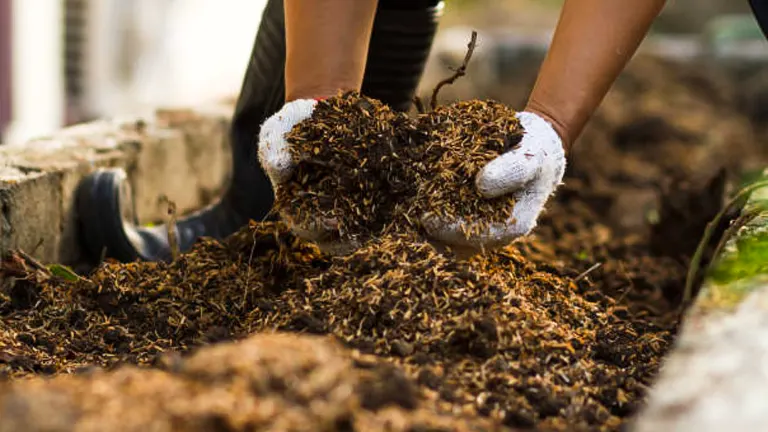
The effectiveness of compost can vary with the seasons, influenced by temperature and moisture levels. In colder months, the microbial activity in compost slows down, reducing the rate at which nutrients are released into the soil. Conversely, during warmer months, increased temperatures can accelerate compost decomposition, potentially leading to quicker nutrient release than plants can utilize. Gardeners need to consider these variations when applying compost to ensure it aligns with the growing needs of their plants and the seasonal climate.
Regulatory Standards
There are specific regulatory standards and guidelines that govern the production and use of compost to ensure it is safe and effective. These regulations might address issues such as the types of materials that can be composted, processing methods to reduce pathogens, and limits on heavy metals or other contaminants. Compliance with these standards is crucial to avoid the introduction of harmful substances into the garden and to ensure that the compost produced is of high quality and beneficial for plant growth.
Understanding Organic Soil
Definition and Composition

Organic soil, a staple for both novice and seasoned gardeners, is a meticulously blended mixture of various natural materials. These typically include peat moss, decomposed organic plant matter, and animal manures. Each component is selected to comply with stringent organic farming standards, ensuring that the soil is free from synthetic chemicals and additives.
The key to organic soil’s effectiveness lies in its diverse components:
- Peat Moss: Offers excellent water retention and aeration.
- Decomposed Organic Matter: Provides a slow-release source of nutrients.
- Animal Manures: Enrich the soil with nitrogen, phosphorus, and potassium, essential for plant growth.
The balanced mixture of these materials creates a nutrient-rich, structurally sound medium ideal for promoting healthy plant growth, particularly in environments where existing soil conditions are suboptimal, such as in new garden beds or container gardens.
Enhanced Benefits of Using Organic Soil
- Consistency: Manufacturers of organic soil ensure a homogeneous mix, maintaining a consistent pH and nutrient profile across batches. This predictability is crucial for gardeners who require uniform conditions to optimize plant health and yield.
- Ease of Use: Ready-to-use upon purchase, organic soil eliminates the need for the gardener to balance pH levels or nutrient concentrations, contrasting with compost, which may need further amendment before use.
- Sustainability: The use of sustainably sourced ingredients in organic soil appeals to environmentally conscious gardeners. This sustainability extends to the manufacturing process, where renewable resources and ecological responsibility are prioritized.
Nutrient Profiles and Scientific Insights
To further understand the scientific basis of organic soil’s effectiveness, below is a table displaying typical nutrient concentrations, pH levels, and organic matter content found in high-quality organic soil mixes:
| Component | Contribution to Soil | Typical Values |
|---|---|---|
| Organic Matter | Improves water retention and soil structure | 20% – 40% |
| Nitrogen (N) | Essential for plant growth and green leaf production | 0.5% – 1.5% |
| Phosphorus (P) | Promotes root development and flower formation | 0.3% – 1.0% |
| Potassium (K) | Vital for disease resistance and water regulation | 0.5% – 2.0% |
| pH Level | Influences nutrient availability and plant health | Typically 5.5 – 7.5 |
Further Considerations
Despite its many benefits, organic soil does have limitations:
- Cost: Generally, organic soil is more expensive than standard soil mixes or homemade compost due to the premium ingredients and certifications required.
- Peat Controversy: While peat moss is a common ingredient, its sustainability is debated due to the environmental impact of peat harvesting, which can degrade valuable wetland ecosystems.
Benefits of Using Organic Soil
pH Balance
One of the critical advantages of organic soil is its engineered composition to maintain a balanced pH suitable for a broad range of plants. Manufacturers carefully select and blend components, such as sphagnum peat, lime, and organic matter, to buffer the soil and achieve a target pH level that maximizes nutrient availability. This pH balance is crucial for plant health, as it affects the solubility of minerals and nutrients in the soil, ensuring that plants can absorb them effectively.
Microbial Inoculants
Organic soils are often enhanced with microbial inoculants, which are beneficial microorganisms added to the soil to promote plant health. These inoculants can include bacteria such as rhizobia, which form symbiotic relationships with plant roots to fix atmospheric nitrogen, or mycorrhizal fungi, which increase water and nutrient absorption. The introduction of these microbes helps to establish a healthy soil microbiome, which supports plant growth by improving nutrient uptake, enhancing root growth, and increasing resistance to pests and diseases.
Comparative Analysis

Deciding between compost and organic soil involves a nuanced understanding of their nutrient profiles, environmental impacts, and practical applications, each suited to different gardening needs.
Nutrient Content and Efficiency
Both compost and organic soil offer unique benefits depending on their use and the requirements of the garden:
- Compost: Offers a diverse array of nutrients, resulting from the decomposition of varied organic materials. The rate of nutrient release from compost is slower, which can be beneficial for long-term soil health and for supporting perennial plants. The nutrient profile typically includes nitrogen (N), phosphorus (P), and potassium (K), but the ratios can vary widely depending on the input materials. This variability often necessitates soil testing and possible supplementation to meet specific plant needs.
- Organic Soil: Formulated for consistency, organic soil blends are designed to provide balanced nutrition right out of the bag, making them ideal for annual plants and vegetables that require consistent, immediate nutrient availability. These soils are usually fortified with a defined N-P-K ratio suitable for general gardening purposes.
Here’s a comparative table illustrating typical nutrient efficiencies:
| Characteristic | Compost | Organic Soil |
|---|---|---|
| Nutrient Release | Slow and variable | Immediate and consistent |
| Nutrient Composition | Depends on input materials | Precisely controlled and balanced |
| Best Use | Perennials, improving soil structure over time | Annuals, immediate planting needs |
| Additional Requirements | Possible need for nutrient supplementation | Generally none required |
Environmental Impact
Both compost and organic soil contribute differently to environmental sustainability:
- Compost: Acts as an eco-friendly option by recycling garden and kitchen waste, preventing the methane emissions associated with landfill disposal. The process of composting also promotes carbon sequestration in the soil, enhancing soil biodiversity and structure, and reducing chemical fertilizer dependency.
- Organic Soil: The impact varies significantly based on its components. While it offers a ready solution for gardeners, the inclusion of peat raises concerns about the depletion of peat bogs, vital ecosystems that serve as significant carbon stores. The sustainability of organic soil can be enhanced by choosing mixes that utilize peat alternatives such as coconut coir or recycled green waste.
Use Cases
The choice between compost and organic soil should align with specific gardening goals:
- Compost: Best for enhancing the quality of existing soil, especially effective in established garden beds or for gardens focusing on sustainability and long-term soil health.
- Organic Soil: Ideal for new gardens or containers where immediate, consistent soil quality is necessary. It reduces the initial effort required to balance and enrich poor soil, providing a quick start for plant growth.
Practical Guidelines
How to Choose Between Compost and Organic Soil
Selecting the right soil amendment depends on several factors that influence the effectiveness and sustainability of your gardening practices. Below, we elaborate on the criteria to consider and provide a detailed table to help guide your decision.
- Type of Plants:
- Quick Nutrient Needs: Some plants, particularly annuals and vegetables, thrive on immediate, balanced nutrient access provided by organic soil.
- Long-Term Nutrition: Perennial plants and those in established gardens benefit from the slow, natural nutrient release of compost, which supports soil health over time.
- Garden Type:
- New Gardens and Containers: Organic soil is often the best choice for these settings because it is specifically designed to provide a balanced and controlled environment right from the start.
- Enhancing Existing Soil: Compost is ideal for existing gardens where the soil already has a structure that can be improved with the addition of organic matter to boost nutrient content and water retention.
- Environmental Considerations:
- Sustainability of Resources: Consider the source of the materials. Compost made from your own kitchen and garden waste reduces waste and minimizes your carbon footprint. In contrast, the sustainability of organic soil can vary depending on the sourcing of its components, such as peat, which has significant environmental implications.
- Local Availability: Using locally produced compost or organic soil can also reduce environmental impacts associated with transportation.
- Economic Factors:
- Cost-Effectiveness: Generally, creating your own compost can be more cost-effective than purchasing organic soil, especially if you have ready access to organic waste materials.
- Labor and Time: Evaluate the time and effort you can dedicate. Compost requires ongoing effort to maintain and mature, whereas organic soil is less labor-intensive since it’s ready to use.
Decision-Making Table
To simplify the decision-making process, here’s a comparative analysis of key factors:
| Factor | Compost | Organic Soil |
|---|---|---|
| Nutrient Release | Slow and gradual, good for long-term soil health | Immediate, suitable for quick-start gardens |
| Best for Plant Type | Perennials, trees, and shrubs | Annuals, vegetables, and starting new plants |
| Cost | Low if homemade; variable if purchased | Generally higher, especially for high-quality mixes |
| Labor Intensity | High (collection, maintenance, maturation) | Low (ready to use) |
| Environmental Impact | Lower (recycles waste, low carbon footprint) | Variable (depends on sourcing of components) |
| Suitability | Improving existing soil | New gardens and containers |
Related Post
- How to Build a Barn: A Step-by-Step Guide for Beginners
- How to Build a Sustainable Compost Bin: Easy and Eco-Friendly DIY
- How to Fertilize Bougainvillea: A Complete Guide for Stunning Blooms
- How to Fertilize Apple Trees: Essential Tips for a Bountiful Harvest
- How to Fertilize Lemon Trees: Secrets for Thriving Citrus
- How to Fertilize Avocado Tree: A Step-by-Step Guide for Lush Growth
- 10 Best Bow Saws to Buy in 2024: Top Picks for the Money
- Best Miter Saw For Beginners
- Top 10 Pruning Saws to Buy in 2024: Best for the Money
- 7 Best Pocket Chainsaw
Conclusion
Choosing between compost and organic soil is more than just a matter of preference; it involves understanding the specific needs of your garden and aligning them with environmental considerations. Compost offers a sustainable option that enhances soil structure and fertility over time, making it ideal for established gardens and environmentally conscious gardeners. Organic soil, on the other hand, provides a consistent, ready-to-use solution that is perfect for new gardens or containers, ensuring that plants receive balanced nutrients from the outset.
FAQs
- What is the main difference between compost and organic soil?
Compost is a soil amendment made from decomposed organic materials, which helps to improve soil health gradually. Organic soil is a ready-to-use mixture that typically contains a blend of compost, peat, and other organic materials, designed to provide a balanced growing medium from the start. - Can I use both compost and organic soil in my garden?
Yes, many gardeners use both to maximize the benefits. Compost can be added to existing garden beds to improve soil health over time, while organic soil is excellent for establishing new beds or containers where immediate nutrient balance is needed. - Is compost or organic soil better for growing vegetables?
Organic soil is often preferred for vegetables because it provides a balanced, nutrient-rich environment immediately, which is crucial for fast-growing vegetable plants. Compost can also be used but may require additional nutrient adjustments depending on its composition. - How do I know if my compost is safe to use?
Ensure that the compost has fully decomposed and reached a sufficient temperature during processing to kill any weed seeds and pathogens. Well-processed compost should be dark, crumbly, and have an earthy smell. - Does organic soil help conserve water more than compost?
Both compost and organic soil improve water retention, but the effect can vary based on the specific composition of the organic soil. Generally, compost’s ability to enhance soil structure can lead to better long-term water conservation. - What are the environmental benefits of using compost?
Compost reduces waste by recycling organic materials that would otherwise end up in landfills, where they can emit methane, a potent greenhouse gas. By composting, you convert this waste into a valuable resource that enriches soil and supports sustainable gardening practices. - Are there any plants that might not thrive in organic soil?
Most plants will thrive in organic soil, but those requiring specific soil conditions (like succulents and some orchids which prefer more draining and less nutrient-rich soil) might not do as well in highly enriched organic soil mixes. - How often should I replace or replenish organic soil in my garden?
Organic soil in containers may need to be replaced or significantly replenished each growing season to maintain nutrient levels and soil structure. In garden beds, it can be refreshed annually with new organic material or compost to maintain its health and vitality.
Whether you choose compost for its long-term soil health benefits or opt for organic soil for immediate plant support, both options can greatly enhance your garden’s productivity and sustainability. Consider your specific garden needs and environmental goals to make the best choice for a thriving garden. Happy gardening!

Benjamin Brooks
Forestry AuthorGreetings! I'm Benjamin Brooks, and my journey over the past 15 years has revolved around the fascinating realms of content creation, expertise in snow clearing, and the intricate world of lumberjacking and landscaping. What began as a simple curiosity about the natural world and heavy machinery has evolved into a passionate profession where my love for crafting words intertwines seamlessly with my lumberjacking and garden skills.







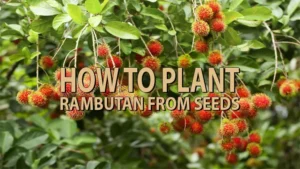
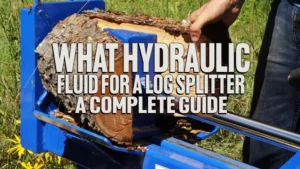
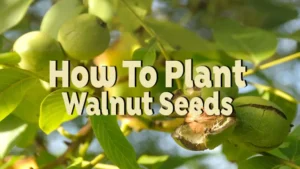

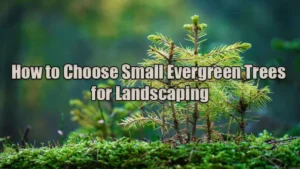

Leave your comment